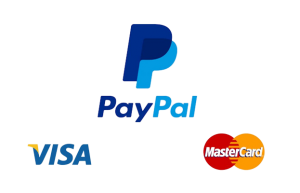These workers are responsible for converting basic principles revisited the raw materials into the finished goods. The concept of total manufacturing cost has been a cornerstone in industrial and manufacturing economics for centuries. It evolved with the industrial revolution as businesses sought to understand and reduce the costs of production to increase competitiveness and profitability. Prototyping is an essential step in the development of electronic products.
What Is a Tuck-In Acquisition and How Does It Work in Accounting?
Here’s an interesting case study on how manufacturing cost analysis helped a steel manufacturing company save costs. According to the book Manufacturing Cost Estimating, the benefits of calculating the costs of manufacturing range from guiding investment decisions to cost control. Next, calculate the value of the existing inventory if the manufacturing company already has a stock of materials from a previous period. Start by making a list of all the direct materials that are used to make the specific product and obtain the cost information for the direct materials you have identified. Manufacturing costs, also called product costs, are the expenses a company incurs in the process of manufacturing products.
Focus on Quality
First, identify the cost of direct materials, which includes all raw materials used in production. Next, calculate direct labor costs, which are the wages paid to workers directly involved in manufacturing. Finally, allocate overhead, which includes expenses like utilities, equipment maintenance, and best invoice management software to streamline ap process factory rent.
The three key contributing elements of manufacturing cost are direct materials, direct labor costs, and manufacturing overhead expenses. When the cost of all these parameters is combined together, a company is able to assess the manufacturing cost. Indirect materials are supplies used in production but not part of the finished product, such as lubricants, cleaning supplies, and small tools. These costs are allocated to manufacturing overhead and distributed across all products.
Implementing Best Practices for Prime Cost Management with TranZact
As earlier explained, labor costs can drive up the total manufacturing costs significantly. As such, it makes business sense to cut back on this area to make for a leaner operation. There are always some materials that get used up but don’t go into the finished product. For example, machines need oil and lubricants to operate, and workers use sandpaper and grinding wheels to shape and polish parts, etc. And, of course, people also need cleaning products, paper, ink, and coffee—it’s not for production, but it must be tallied. In many factories, these stock materials are kept in a physical location different from other inventory, which makes it easier to control and account for this indirect manufacturing cost.
Track production and reduce costs across your operations
- As with materials, labor also, directly and indirectly, affects your balance sheet.
- Establishing long-term relationships with suppliers also helps in securing stable prices for larger volume orders.
- This reduction occurs because fixed costs (such as machinery and overhead expenses) are spread over a larger number of units.
- However, hurried manufacturing might risk product quality and lead to defects.
- It, thus, helps in cost management and operational efficiency at the factory level.
- Manufacturers aim to secure better deals on critical components and raw materials.
These devices will monitor the energy consumption on your factory floor, turn off machines that are not being used, and optimize supply to those that need it. According to Forbes, unsubsidized renewable energy is the cheapest source of energy for manufacturers. An alternative to this would be that you sell off the waste to other parties that have a use for it. This way, your business will be able to earn some money back, tipping the ratio of accounts receivable to accounts payable back in its favor. This will help you in making better business decisions related to spending and investing.
Calculating manufacturing costs helps determine pricing, control expenses, and maximize profits. Use the total manufacturing cost formula to accurately track production costs and optimize efficiency. After choosing an allocation method, divide the total overhead costs across your products based on machine hours or labor hours. For example, if your factory’s overhead costs are $10,000 and your machines run for 1,000 hours, you would allocate $10 in overhead per machine hour. This allocation ensures that overhead is fairly distributed among products, giving you a more accurate picture of total manufacturing costs. This rate includes wages, benefits, and any additional payroll costs for the employees directly involved in production.
Trump says the ultimate fruits of tariffs will be worth the pain. Experts disagree.
- Acquiring raw materials is essential for producing electronic components and completed devices.
- This looks at all stages of your manufacturing process, from raw materials to work in progress to the final result.
- These costs are central to financial planning, influencing budgeting and profit margins.
- On the other hand, if you price your products too high, then you might risk missing out on potential sales and market share.
- Kavitha Simha is a productivity author and researcher, passionate about finding smarter ways to manage time.
- Streamlining marketing strategies can significantly cut down on overhead costs.
It should be noted that wafers that TSMC currently produces at Fab 21 travel back to Taiwan to get diced, tested, and packaged. Some of them then go to China or elsewhere to be put into actual devices; some will travel back to the U.S., though. profit and loss statement Therefore, their logistics are somewhat more complicated than those of typical wafers processed in Taiwan. However, this hardly dramatically adds to costs, and TSMC now plans to build packaging capacity in the U.S.
Types of transport, such as flatbed trailers for large machinery, are vital when accommodating unique equipment sizes. Direct labor costs” refer to expenditures that are not divided into material and labor costs. Direct costs are expenses that are tied to the manufacture of a certain product. They can be easily separated because their relationship to the product is easy to understand. Conversely, indirect costs are expenses that are not tied to the manufacture of a fixed product and are difficult to determine. Although slightly complex, calculating manufacturing costs follows some basic mathematical principles.
Production Volumes and Product Customization
Acquiring raw materials is essential for producing electronic components and completed devices. The cost of raw materials affects both the cost per unit and the final product price. A robust supply chain management strategy is necessary to secure quality materials at the best standard price. Fluctuations in raw material prices can impact profit margins and production costs, requiring careful inventory management. Negotiating with suppliers and purchasing in larger volumes may provide cost advantages. Ensuring a consistent supply of raw materials is key to maintaining production process continuity and product to market reliability.
Now, to understand how you can apply your identified direct and indirect costs to the formula to find the total manufacturing cost, we will continue with the skateboard example discussed above. Once you know your total manufacturing costs, you will be able to identify where inefficiencies exist. This will help you in making changes that lead to a more efficient manufacturing process and lower costs.
Here’s what economists are saying about Trump’s tariffs
A company that has a competitive edge above the others is able to sustain itself in the market for the long run and also maintain its profitability. With the help of manufacturing costs, companies can have an understanding of the pricing strategy. Many manufacturing companies also assess the pricing strategy of their competitors.



